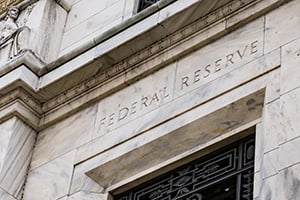 The Federal Open Market Committee (FOMC) met this week and voted unanimously to hold rates steady for the fourth consecutive meeting, leaving its policy range at 5.25 percent to 5.5 percent. This outcome was confidently priced into futures markets leading up to the meeting, so the committee’s decision comes as no surprise.
The Federal Open Market Committee (FOMC) met this week and voted unanimously to hold rates steady for the fourth consecutive meeting, leaving its policy range at 5.25 percent to 5.5 percent. This outcome was confidently priced into futures markets leading up to the meeting, so the committee’s decision comes as no surprise.
While it didn’t happen in January, the 2024 narrative around the Fed is fixated on rate cuts. So, what is the Fed waiting for? Let’s take a look at what contributed to the Fed’s decision to keep rates unchanged—and what may have to happen before rate cuts truly come into play.
Same Story, Different Month
Looking back over the six weeks since the previous FOMC meeting, nothing has changed that would prompt the committee to adjust its policy rates. Inflation shows a promising trend of moderation despite remaining well above the Fed’s 2 percent target. The job market remains strong, with unemployment sticking at 3.7 percent. Finally, economic activity continues to chug along, with GDP firmly beating expectations.
Notably, the post-meeting press release removed references to future policy tightening. But with such a strong economy on our hands, some Fed officials have openly expressed that they are in no rush to start loosening policy. It’s clear we are nearing an inflection point in Fed policy, so when could we expect the shift to take form?
More Data Is Better Data
While Fed Chair Jerome Powell largely stuck with his personal brand of calculated ambiguity during his post-meeting press conference, he made it clear that recent economic updates have been positive. He expressed the committee’s confidence that inflation is moving sustainably to 2 percent but highlighted the need for greater confidence. He also acknowledged that the most recent six months of data have been very good but that they need to see more of that good data before acting on it.
All in all, Powell conveyed the FOMC’s need for more time before making any new moves. Following the press conference, futures markets were pricing in lower expectations for rate cuts at the March and May meetings, indicating that Powell’s message was received. It will be interesting to see how those expectations continue to evolve as more data is released leading up to the next rate decision.
Stay Tuned for More
Ultimately, the FOMC maintains its stance of meeting-to-meeting data dependency, so we’ll be keeping tabs on incoming data and additional Fed comments in the weeks and months ahead. We plan to continue these post-meeting blogs, so be sure to subscribe to The Independent Market Observer to stay up to date. The next FOMC meeting is scheduled for March 19–20, and we’ll be here to help you digest Fed developments as we get further into the year.


 Print
Print

